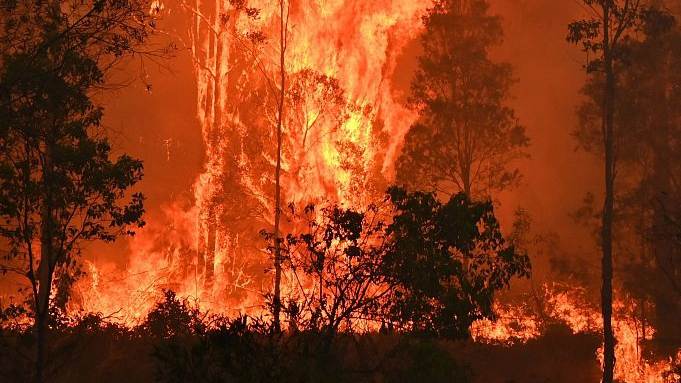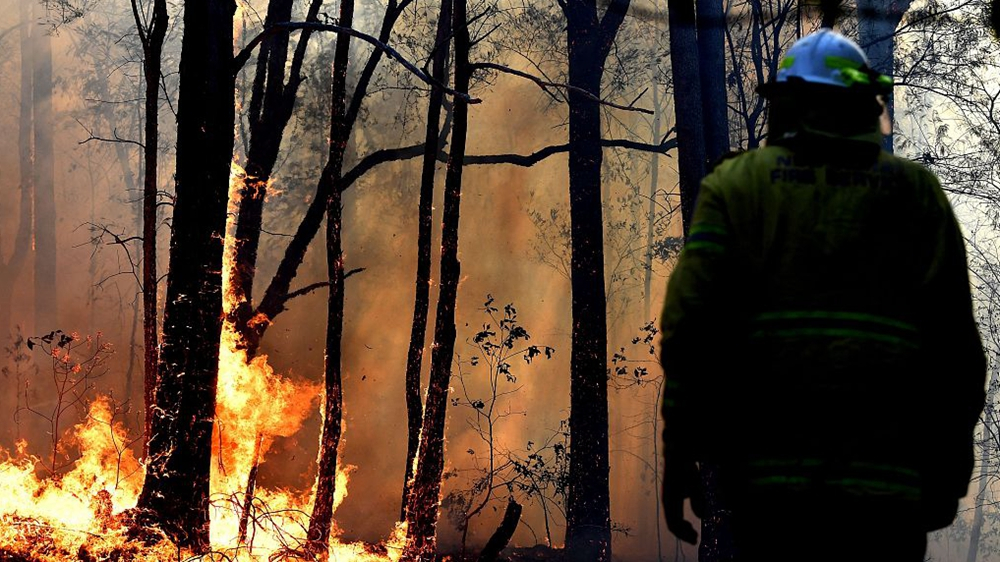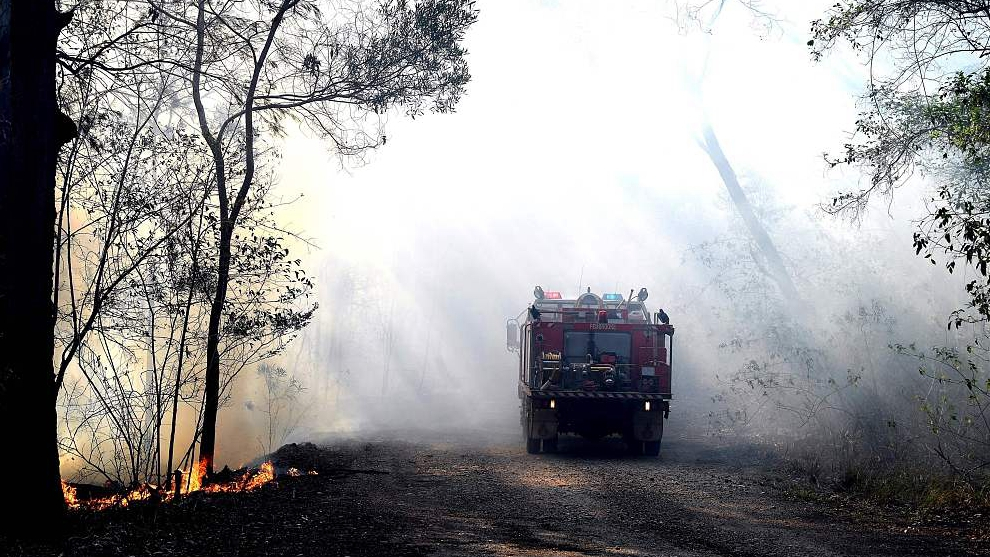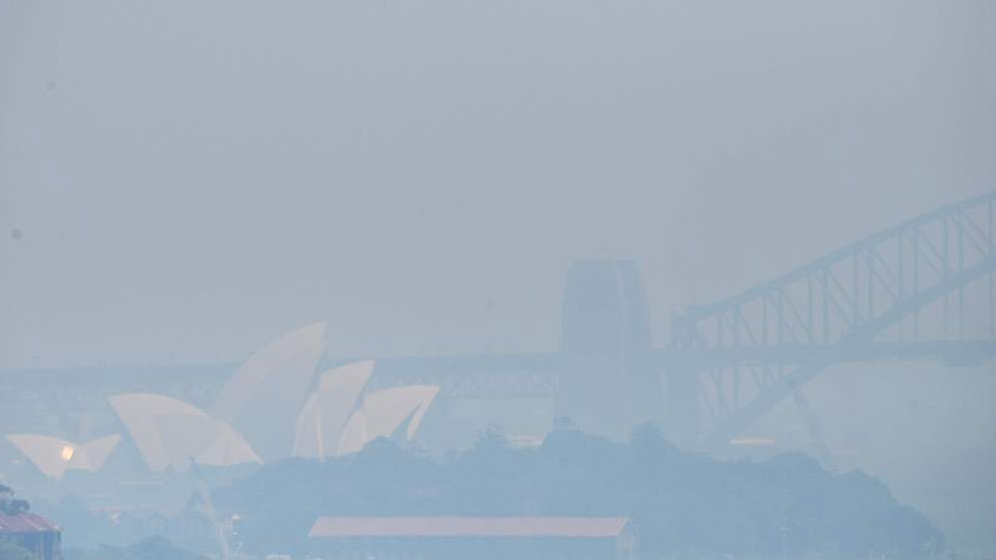
A fire rages in Bobin, 350 kilometers north of Sydney on November 9, 2019./ VCG Photo
A fire rages in Bobin, 350 kilometers north of Sydney on November 9, 2019./ VCG Photo
Catastrophic bushfires in eastern Australia have killed at least three people and five are missing, authorities said on Saturday.
The fires, which flared up along the country's east coast on Friday afternoon, also destroyed at least 150 homes.
More than 30 people were injured, mostly firefighters working for hours on end in smoky, smoldering scrubland and blazing forests of towering eucalyptus.

A firefighter works as a bushfire burns in Port Macquarie, November 2, 2019. /VCG Photo
A firefighter works as a bushfire burns in Port Macquarie, November 2, 2019. /VCG Photo
Almost 100 blazes raged across the New South Wales and Queensland countryside - although only five of them remained highly dangerous.
Prime Minister Scott Morrison said the large number of fires was "incredibly concerning." He urged residents to "stay safe" and "listen to emergency services."
"I'm getting regular updates and we stand ready to offer any assistance needed," he tweeted.

A fire truck drives through smoke in Port Macquarie, November 2, 2019. /VCG Photo
A fire truck drives through smoke in Port Macquarie, November 2, 2019. /VCG Photo
Firefighters had warned they were in "uncharted territory" as they deployed 1,200 firefighters and 70 aircraft across a roughly 1,000-kilometer (620-mile) stretch of the seaboard.
Bushfires are common in Australia and a vast corps of firefighters had already been tackling sporadic blazes for months in the lead-up to the southern hemisphere summer.
But this is a dramatic start to what scientists predict will be a tough fire season ahead - with climate change and unfavorable weather cycles helping create a tinderbox of strong winds, low humidity and high temperatures.
While conditions eased markedly in some areas and the forecast was downgraded from "extreme" to "high" or "very high" Saturday, a total fire ban remained in place in many areas and further high winds were predicted.

Australia's Sydney Opera House (L) and Harbour Bridge are obscured by a smokey haze in Sydney, November 1, 2019. /VCG Photo
Australia's Sydney Opera House (L) and Harbour Bridge are obscured by a smokey haze in Sydney, November 1, 2019. /VCG Photo
Firefighters had described the conditions on Friday as "difficult" and "dangerous."
"Unfortunately, many people have called for help but due to the size and speed of the fires we couldn't get to everyone, even by road or helicopter," New South Wales firefighters said.
In some areas, residents were stuck and told to simply "seek shelter as it is too late to leave."
Earlier this month some of the same fires cloaked Sydney in hazardous smoke for days, giving the city a higher concentration of particles per million than cities like Bangkok, Jakarta or Hong Kong.
Swathes of Australia have gone months without adequate rainfall, forcing farmers to truck in water at exorbitant cost, sell off livestock or leave their land to lay fallow.
(With input from agencies)